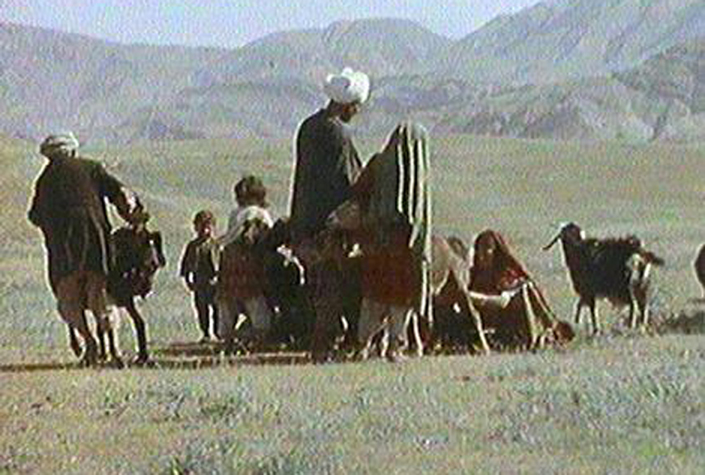SONS OF HAJI OMAR
Afghanistan 1978 | 58 Min. | BetaSP, OmeU
Filmforum Classic: The production and distribution history of “Sons of Haji Omar” is an interesting case of political-ideological misuse of an initially purely anthropological project by major film and television companies who changed its format and ideological significance. Our basic aim was to describe the interconnectedness of the three main segments of Afghan society, the pastoral, the sedentary-agricultural and the urban (bazaar towns). We believed that we could best study this interconnectedness through the process of sedenterization of a specific pastoral tribe increasingly involved in agricultural and bazaar activities while still pursuing sheep breeding on a transhumant basis. Field work started in 1974 and proceeded with interruptions until spring 1976. I concentrated on the family of the tribal chief, Haji Omar, who was at the time one of the wealthiest men in that part of the country. My research work was initially sponsored by the National Geographic Society which expected to obtain a popular film for its television series. During early 1976 however the National Geographic lost interest in the project. As a new sponsor I found the National Anthropological Film Center at the Smithsonian Institution. Our crew, Tim and Patsy Asch and myself, filmed without interruption for a period of four months during the summer of 1976 exposing close to 70 000 feet of 16 mm film, all with sync sound. We covered best pastoral activities with agriculture and bazaar life coming second. We integrated these economic activities around the personalities of our principal protagonists, Haji Omar and his three sons. During the fall of 1976 the Ashes quit the project. The National Film Board of Canada then took over and we finished the winter sequences with the help of a Canadian crew. In 1978 we started editing in the NFB in Montreal. I had prepared plans for a 3 hours series of 3 films, the first on pastoralism, the second on the bazaar town of Narin, the third on agriculture. We started editing and were progressing successfully. Meanwhile the civil war in Afghanistan had already started. In this context the NFB director ordered me to replace the 3 hours anthropological project with a one hour television film.
The original 3 hour version was destroyed and shortened to an one hour production. That is the present film, “Sons of Haji Omar”. This film was highly successful and was broadcast all around the world. The BBC got hold of the film and changed 10 minutes introducing mujahidin scenes which were totally out of place. That is how the materials of an original scientific project were changed and used for a commercial television show by the NFB and later ideologically falsified by the BBC.
Asen Balikci, 2002



